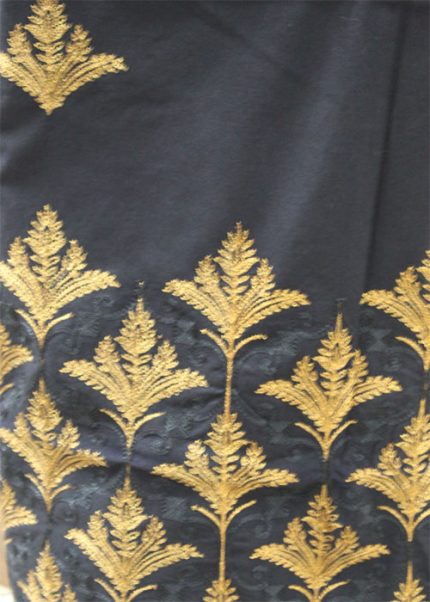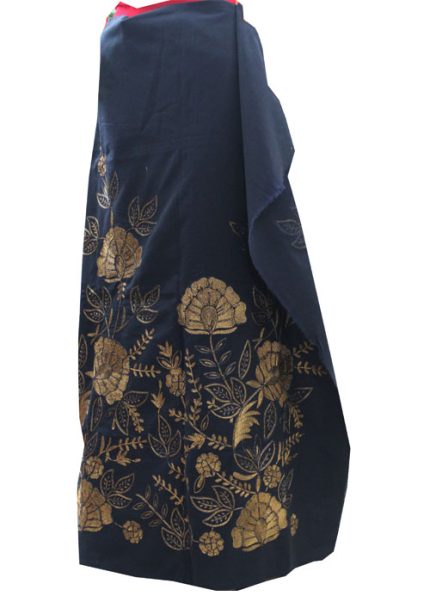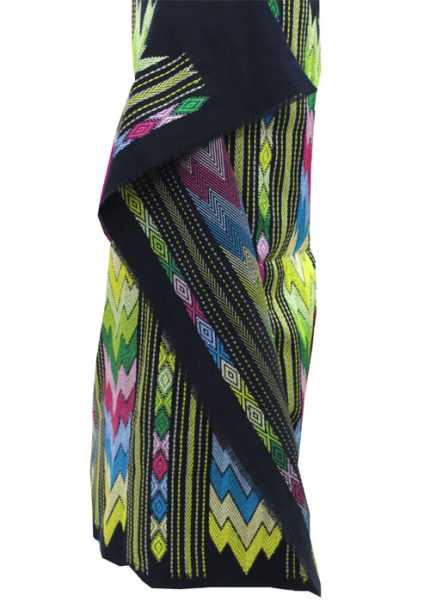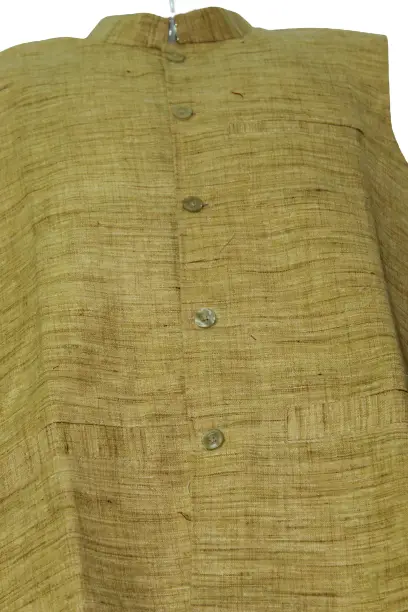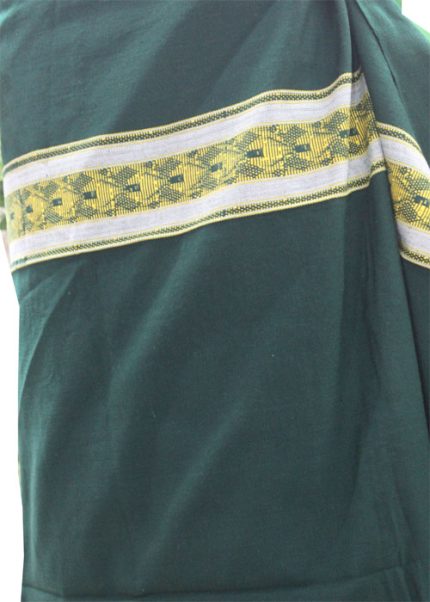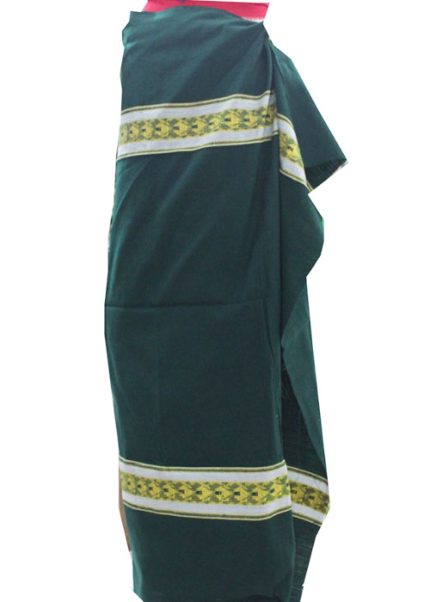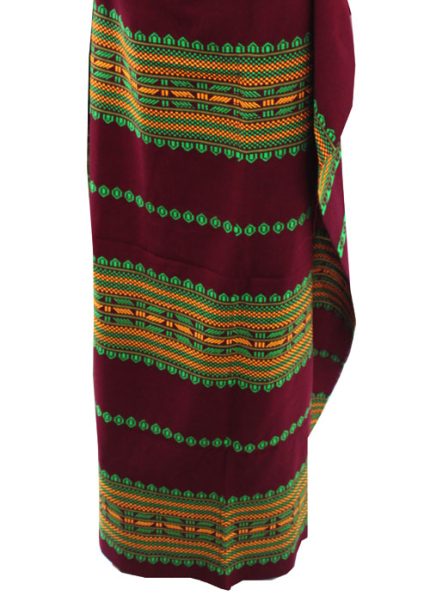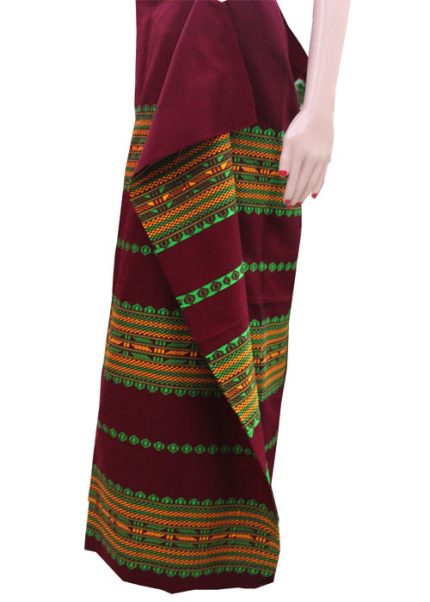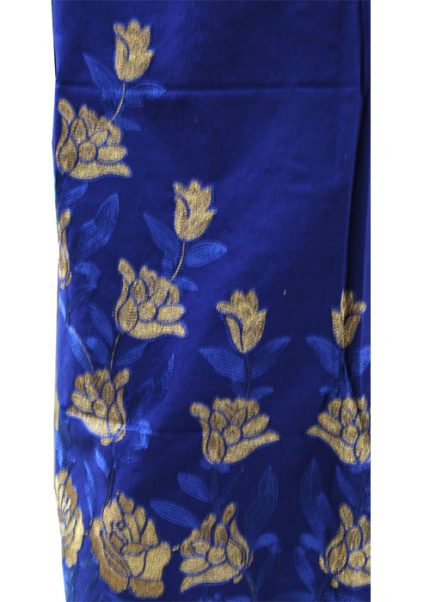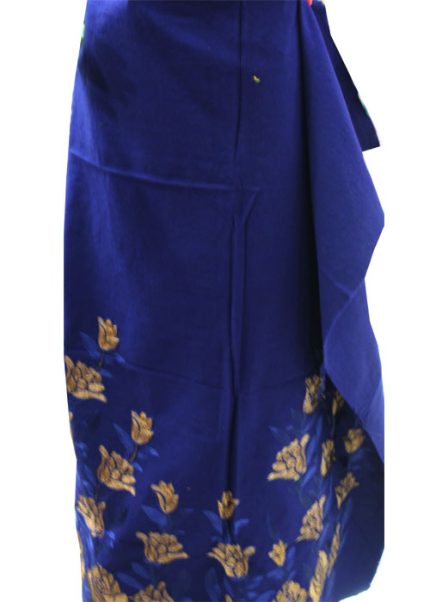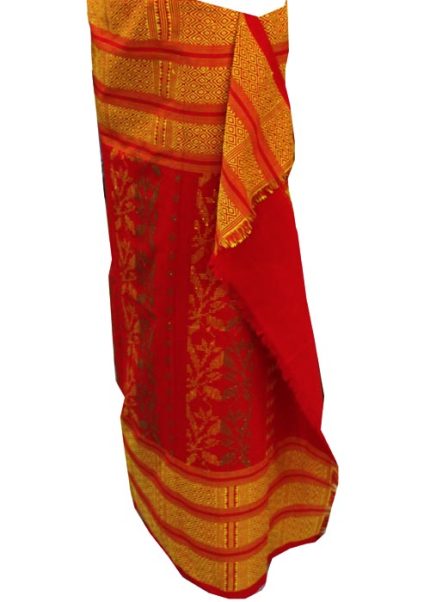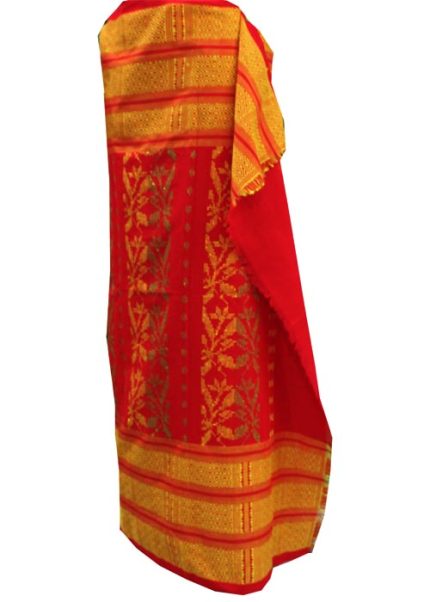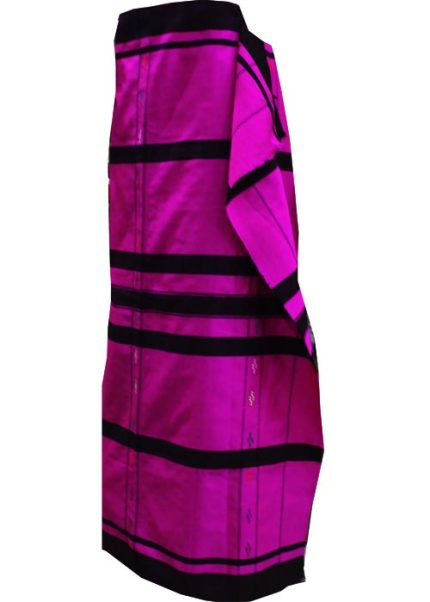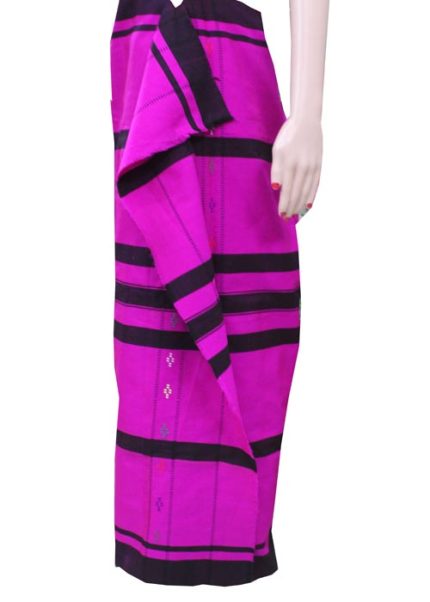Mekhela Chador is a traditional Assamese dress. The bottom portion, Mekhela, is in a form of a wide cylindrical cloth-like sarong that’s draped from the waist downwards and folded into one or two pleats around the waist tucked in. The upper portion is called the chador.
This Tussar silk (alternatively spelled as tussah, Tushar, tassar,[1] tussore, tasar, tussur, or tusser, and also known as (Sanskrit) kosa silk) is produced from larvae of several species of silkworms belonging to the moth genus Antheraea, including A. assamensis, A. paphia, A. pernyi, A. roylei, and A. yamamai. These silkworms live in the wild forests in trees belonging to Terminalia species and Shorea robusta, as well as other food plants such as jamun and oak found in South Asia, eating the leaves of the trees on which they live.[2][3] Tussar silk is valued for its rich texture and natural, deep-gold colour, and varieties are produced in many countries, including China,[4] India, Japan, and Sri Lanka.[5]
Making Process
To kill the silkworms, the cocoons are dried in the sun. A variation of the process exists in which the silkworms are allowed to leave before the cocoons are soaked in boiling water to soften the silk, and then the fibers are reeled.[2][3] Single-shelled, oval-shaped cocoons are collected and then boiled to extract the silk yarn. Boiling is a very important part in the manufacturing of silk, as it softens the cocoon and makes the extraction of silk easier. In conventional sericulture, the cocoons are boiled with the larvae still inside, but if the cocoons are boiled after the larvae have left them, the silk made is then called “nonviolent silk” or “Ahimsa silk“. In China, the silks are given different names when silkworms are reared on different plants, as the diet of the silkworms has an effect on the quality of the silk. For example, silk from larvae on the wild mulberry is called zhe, while those on the oak Quercus dentata produce hu.[4]
Tussar silk is considered more textured than cultivated Bombyx or “mulberry” silk, but it has shorter fibres, which makes it less durable. It has a dull, gold sheen.[2][3] As most of the cocoons are collected from the forest, it is considered by many as a forest product.
The Product is washable by both hand and machine.
The set is completely handwoven by a rural weaver. The set contains a chadar, a mekhela and blouse piece and was designed in Miri Design. Cash on delivery is available all over India. To buy physically visit our offline outlet artexD on the first floor, Kay M Plaza, Ganeshguri, Guwahati-781006, Assam, To buy online visit our site www.artexdirect.com or call or whatsapp 9508159134 / 9854121867
The size ( Approx) of the set is given below.
Chadar length : 9 ft. 10 inch
Chadar width : 2 ft 11 inch
Mekhela length : 4 ft 4 inch
Mekhela width : 3 ft 0 inch
Blouse piece length : 2 ft 7 inch
Blouse piece width : 2 ft 6 inch
Material : Pure Tushar
Color : Golden with black design
Made by : Rural Weaver of Dhemaji
Condition : Ready to Wear Condition






